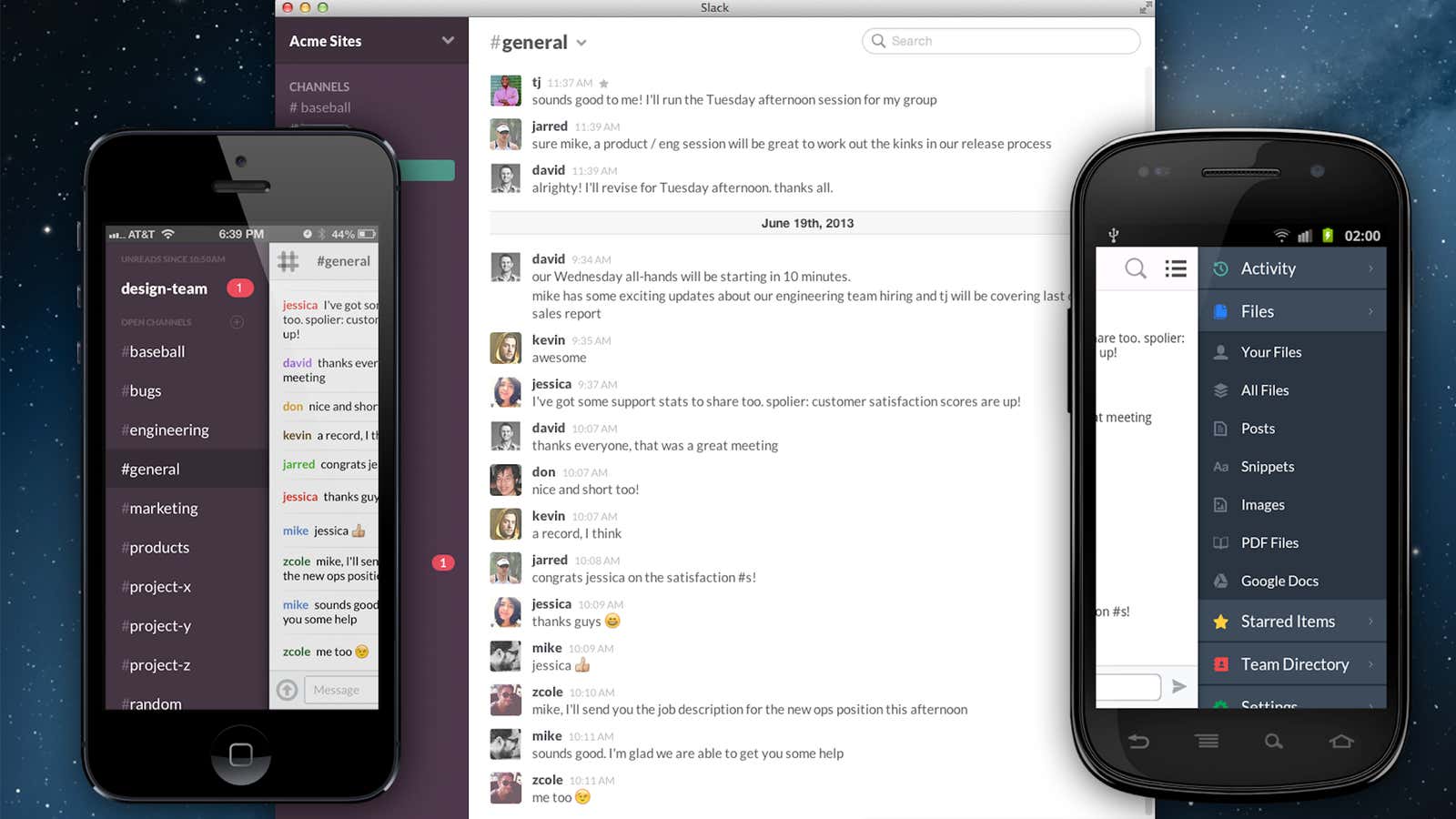Email is either the most efficient or least efficient workplace innovation of the last few decades, depending on how you look at it. One McKinsey study concluded that workers spend the equivalent of 73 full work days a year dealing with email. Flickr co-founder Stewart Butterfield thinks he has found a solution to email’s shortcomings. His latest venture, called Slack, combines group chat, direct messaging and file sharing in an archivable and searchable system.
Butterfield, who sold the Flickr photo sharing site to Yahoo in 2005, believes that in 10 years, no company will be using email as the main way that co-workers communicate. About 45 teams of workers that have been working with Slack in an experimental phase reported that they received 75% less email within three days of using the system, and none of the teams abandoned Slack. Butterfield says Slack, which is available as a website and iOS and Android mobile apps, also reduces the need to have meetings because work issues are discussed through the Slack system.
Finding ways around email is not a new goal. French information technology company Atos banned email in late 2011 and the CEO Thierry Breton says the policy has made his workers more productive (paywall). There are also other systems that provide components of what Slack is offering, like Yammer and Salesforce.com’s Chatter.com. And many people just rely on standard chat services such as Google Chat to communicate with individuals or groups of colleagues.
Slack’s approach differs by combining messaging with file sharing and other features into one system, instead of having them available independently of each other, according to Butterfield. Slack is already integrated with various work and social networking tools like Dropbox, Google Docs, Twitter, help desk platform ZenDesk and others. As for privacy, Slack uses the highest level of encryption available on your operating system and can piggyback off of systems already in place, like two-step authentification or a pin code.
One of Slack’s key features is the ability to search through group chats—which are organized in what are known as channels—and direct messages. And when your name is mentioned, you receive a notification so you don’t miss messages. You can also highlight keywords. Slack works best for people who spend most of their day at a computer, and is meant for small- to medium-sized businesses (perhaps a maximum of 150 people) and teams within large companies. Slack is generally limited to communicating with people within your own company, though outsiders such as consultants can be invited to your company’s Slack community.
“Email can be a source of tension at organizations because of how difficult and inefficient it can be to get through them,” Butterfield said. “So much time is wasted because of email.”
Email has advantages over Slack, such as the bcc option that allows people to send a message without having others know to whom it was sent. And Slack will eventually come at a cost, while some other services, like the Google ecosystem of messaging and file sharing, have free product tiers. Starting today, people can sign up at Slack.com for a free preview and then later, there will be a monthly subscription plan based on the number of users. Slack isn’t ready to disclose pricing details yet.
Butterfield acknowledges that Slack can be a hard sell because it requires a user to have it open all day and it’s an “all or nothing” kind of system. But once you use it, he believes that you will never go back to email again for communicating with colleagues. “Right now, communication is scattered all over,” Butterfield said. “Slack concentrates everything in one place so you can get more work done.”
